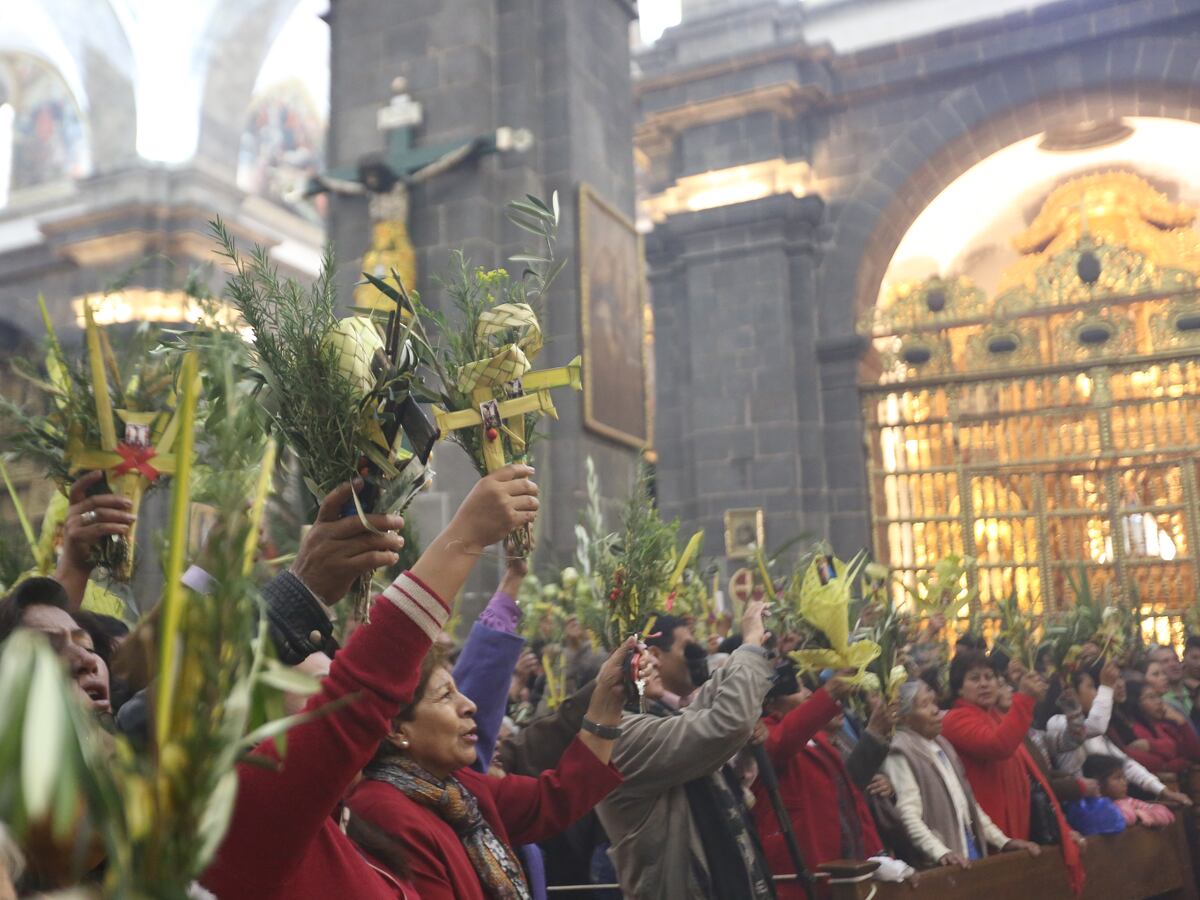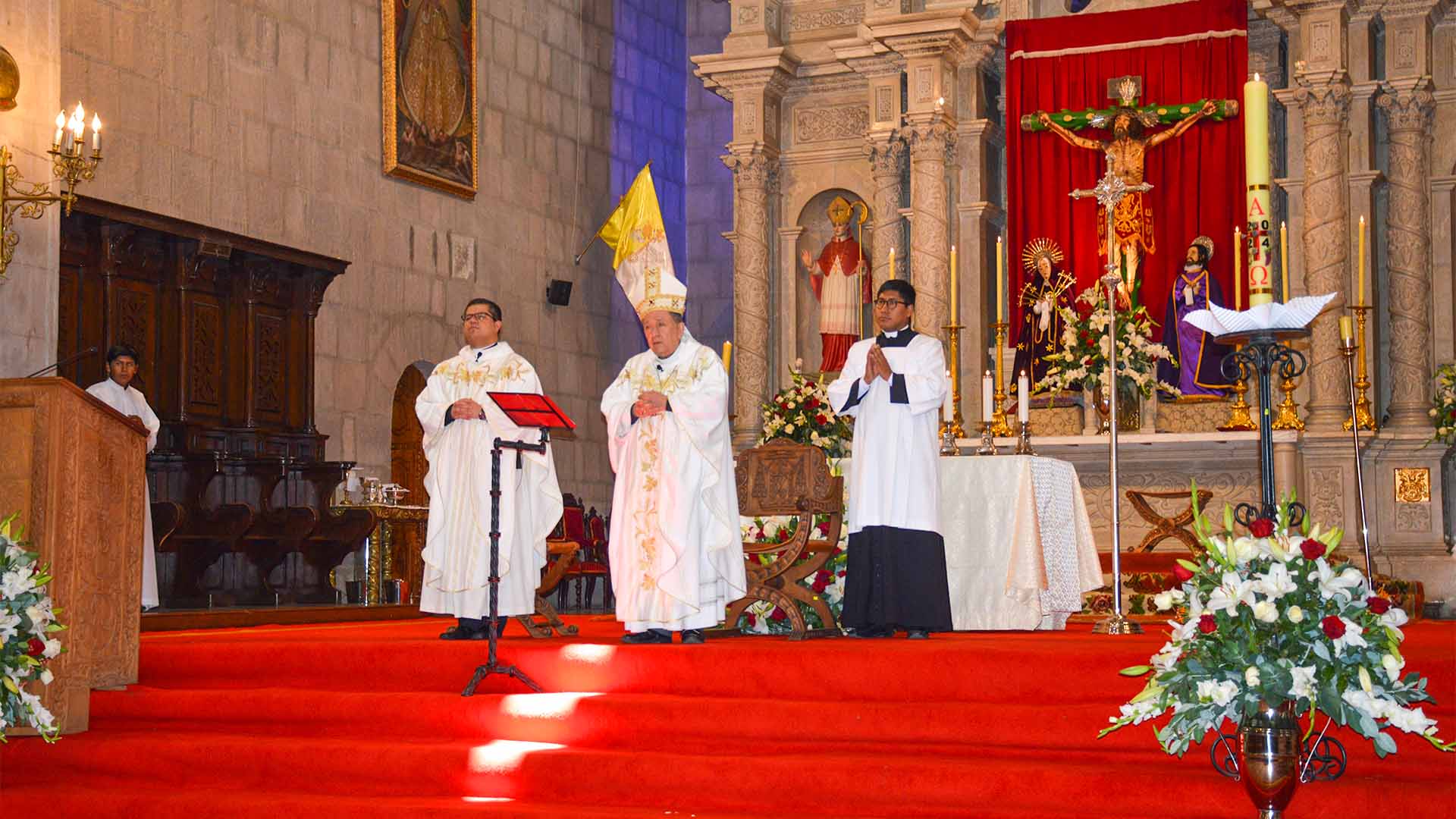Holy Week in Cusco: Faith, Tradition, and Living Culture
Holy Week in Cusco is one of the most important religious events in Peru. Catholicism blends with Andean customs to create a unique mix of devotion, culture, native ñucchu flowers, traditional singing, and profound spirituality.
The celebration spans from the procession of the Lord of the Earthquakes to the tradition of the 12 dishes on Holy Thursday.
Palm Sunday – Solemn Beginning of Holy Week
Palm Sunday marks the beginning of Holy Week and commemorates the triumphant entry of Jesus into Jerusalem. In Cusco, this tradition is observed with deep devotion.
The faithful attend Mass carrying palm and olive branches, which are blessed by priests as symbols of peace and faith. Outside churches like San Pedro and the Cusco Cathedral, the traditional “ramitos benditos” (blessed bouquets) are sold, decorated with dried flowers, laurel leaves, and colorful ribbons.
The processions feature the image of Christ riding a donkey, symbolizing the humility of his entry.

Holy Monday – Procession of the Lord of the Earthquakes (Taytacha de los Temblores)
Holy Monday is the most solemn and widely attended day of Holy Week in Cusco. On this day, the procession of the Lord of the Earthquakes takes place—affectionately known as Taytacha, a miraculous image venerated since the 17th century and recognized as the Sworn Patron of Cusco.
The image, representing a crucified Christ with dark skin, departs from Cusco’s Cathedral at sunset, carried by the faithful, and makes its way through the Historic Center for several hours. Thousands gather along the streets and balconies to pay homage.

During the procession:
- Devotees throw petals of ñucchu, a red Andean flower symbolizing Christ’s sacrifice and blood.
- The air is filled with the scent of incense and the deep sounds of musical bands.
Holy Thursday – The Last Supper and the Tradition of the 12 Dishes
This day commemorates the Last Supper of Jesus:
• Las familias cusqueñas preparan una comida especial de 12 platos (en referencia a los 12 apóstoles). Estos platos no llevan carne y pueden incluir:
- Shrimp soup (chupe de camarones)
- Lisas soup (sopa de lisas)
- Fava bean stew (kapchi de habas)
- Corn pudding (mazamorra de calabaza)
- Sweet empanadas
- Humitas (steamed corn cakes), among others
At night, the faithful take part in the traditional “visit to the seven churches,” which symbolizes Jesus’ journey before his crucifixion.
The most visited churches in Cusco include: The Cathedral, La Compañía de Jesús, San Francisco, San Pedro, Santa Clara, Santo Domingo, and Belén.

Good Friday – The Passion and Death of Christ
One of the most solemn and silent days of the liturgical calendar.
The day often begins at dawn with the Via Crucis: a devout procession that winds through churches and ancient streets of Cusco, pausing at each station to reflect on Christ’s suffering.
In the afternoon, the city comes together for the procession of the Holy Sepulchre, accompanied by the figure of the Sorrowful Virgin. The streets are adorned with flower carpets as the faithful walk in silence.
The Eucharist is not celebrated; instead, the Passion according to Saint John is solemnly proclaimed, and the Holy Cross is venerated inside the church.

Easter Sunday – Celebration of Life and Hope
The central celebration of the Christian faith: the victory of Jesus over death. At dawn or early in the morning, several parishes organize the procession of the Risen Christ, dressed in white and surrounded by flowers—a symbol of new life and eternal joy.
The Easter Mass is celebrated, a festive liturgy marked by joyful hymns, incense, the ringing of bells, and an atmosphere of jubilation. Everything proclaims the triumph of light over darkness.
Families gather once again around the table to share food and celebrate renewed hope.

CONCLUCION
Holy Week in Cusco is not just a date on the liturgical calendar; it is a living experience that weaves together history, identity, and spirituality. For visitors, taking part in these celebrations offers a unique opportunity to connect with Peru’s living culture and to witness how Catholic tradition and Andean worldview coexist in a profound expression.
However, it is also essential to reflect on the role of tourism in these contexts. As travelers, we must go beyond simply observing a visual spectacle. It is vital to respect sacred spaces, moments of prayer, and local cultural expressions. The camera should accompany the heart, not interrupt devotion.
Holy Week in Cusco invites us not only to observe, but to feel with respect, to participate with empathy, and to appreciate with awareness. Because when tourism is done with soul, it also becomes an act of faith toward the culture that welcomes us.

